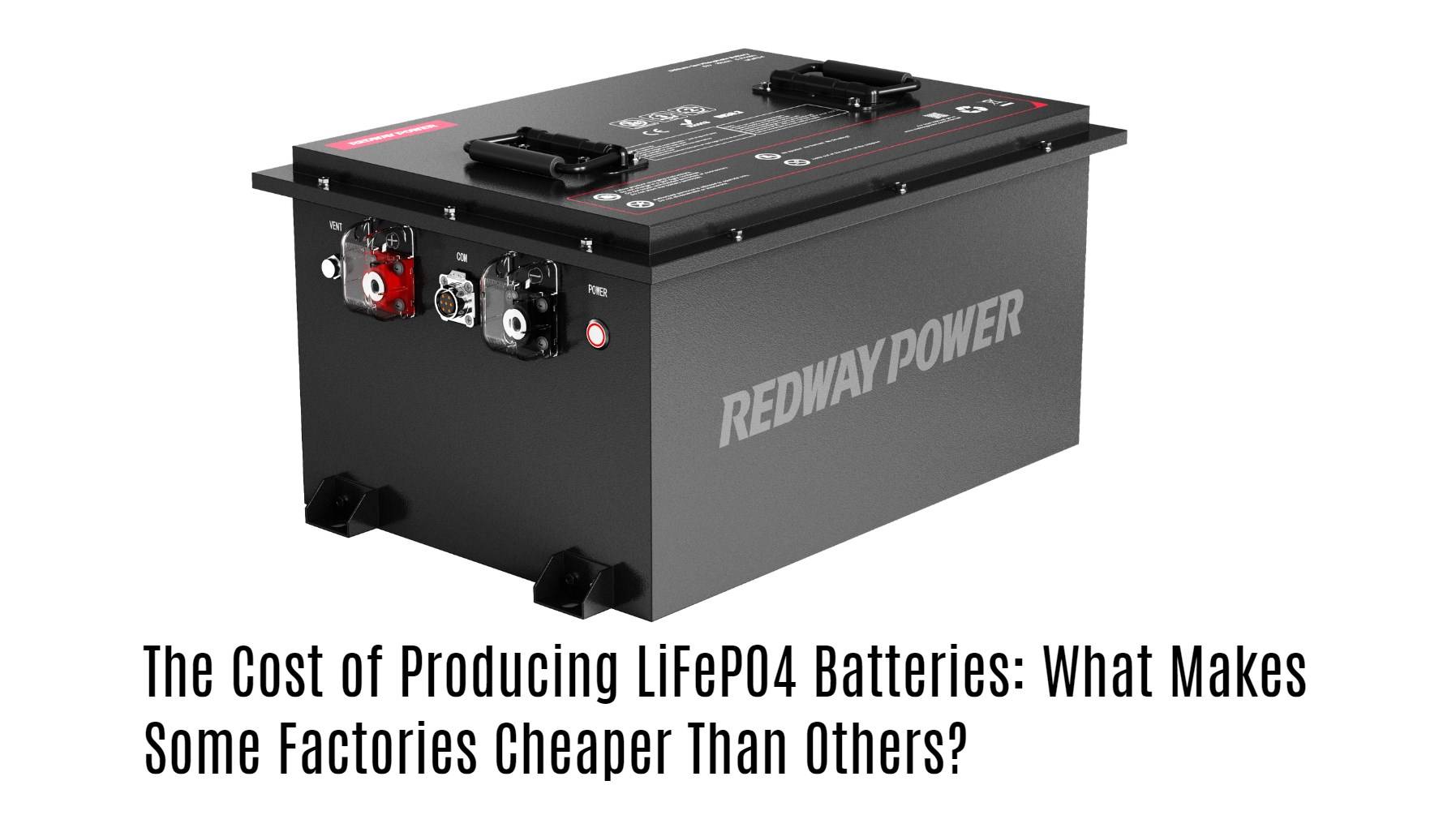The cost of producing LiFePO4 batteries varies significantly among manufacturers due to several key factors. These include raw material prices, manufacturing complexity, labor and overhead costs, and economies of scale. Understanding these elements can help businesses choose the right supplier and optimize their production processes for better pricing.
What factors influence the cost of producing LiFePO4 batteries?
Several factors contribute to the overall cost structure of LiFePO4 batteries:
- Raw Material Costs: The prices of lithium, iron, phosphate, and other materials directly impact production costs.
- Manufacturing Complexity: The processes involved in producing LiFePO4 batteries require specialized equipment and techniques.
- Labor Costs: Skilled labor is essential for quality control and production efficiency.
- Overhead Expenses: This includes utilities, facility maintenance, and administrative costs.
- Economies of Scale: Larger production volumes can reduce per-unit costs.
By analyzing these factors, manufacturers can identify areas for cost reduction.Chart: Factors Influencing LiFePO4 Battery Costs
| Factor | Description |
|---|---|
| Raw Material Costs | Fluctuations in lithium and iron prices |
| Manufacturing Complexity | Specialized processes increase costs |
| Labor Costs | Skilled workforce needed for production |
| Overhead Expenses | Utilities and facility maintenance |
| Economies of Scale | Larger volumes reduce per-unit costs |
How do raw material prices affect LiFePO4 battery production costs?
Raw material prices are one of the most significant contributors to the cost of LiFePO4 batteries. For instance:
- Lithium: Prices have fluctuated widely due to demand from electric vehicles and energy storage sectors.
- Iron Phosphate: Generally more stable than lithium but still subject to market variations.
The combined cost of these materials can account for a substantial portion—often over 50%—of the total production cost. Therefore, manufacturers must closely monitor market trends to manage expenses effectively.Chart: Breakdown of Raw Material Costs
| Material | Cost Contribution (%) |
|---|---|
| Lithium | 30% |
| Iron Phosphate | 20% |
| Other Materials | 10% |
What role does manufacturing complexity play in battery pricing?
Manufacturing complexity significantly impacts the cost structure of LiFePO4 batteries. The production process involves several steps:
- Material Preparation: Requires precise processing techniques to ensure quality.
- Cell Assembly: Involves careful handling to prevent contamination.
- Quality Control: Stringent testing protocols are necessary to meet safety standards.
These complexities necessitate advanced machinery and skilled labor, which contribute to higher overall production costs compared to simpler battery chemistries.
How do labor and overhead expenses impact the cost of LiFePO4 batteries?
Labor costs are crucial in determining the overall expense of producing LiFePO4 batteries. Skilled workers are needed for tasks such as:
- Quality assurance
- Equipment operation
- Maintenance
Additionally, overhead expenses—such as utilities, rent, and administrative salaries—add another layer to production costs. Efficient management of these expenses is vital for maintaining competitive pricing in the market.Chart: Labor and Overhead Cost Contributions
| Cost Type | Contribution (%) |
|---|---|
| Labor | 25% |
| Overhead | 15% |
What is the effect of economies of scale on battery pricing?
Economies of scale play a significant role in reducing per-unit costs as production volumes increase. Larger manufacturers can spread fixed costs over a greater number of units, leading to lower prices per battery. This effect is particularly pronounced in industries with high initial capital investments, such as battery manufacturing.As demand for LiFePO4 batteries grows, manufacturers that can scale up their operations efficiently will likely see substantial cost savings, allowing them to offer more competitive pricing in the market.Buy Wholesale Battery Tips
For wholesale battery buyers or clients seeking OEM orders overseas, choosing Redway Battery is an excellent option. With over 13 years of experience, Redway offers high-quality lithium batteries as a sustainable alternative to lead-acid batteries. To make OEM orders from a reliable manufacturer like Redway Battery:
- Research potential suppliers based on their reputation and product offerings.
- Request samples to assess quality before placing bulk orders.
- Discuss customization options to meet specific project requirements.
Industrial News
Recent developments in the lithium battery sector highlight significant trends:
- Rising Demand for LiFePO4 Batteries: As renewable energy storage solutions gain traction, demand for LiFePO4 technology is increasing, prompting manufacturers to expand capacity.
- Material Price Volatility: Fluctuations in raw material costs continue to challenge manufacturers as they seek to maintain competitive pricing while ensuring quality.
These trends indicate a dynamic market environment where producers must adapt quickly to changing conditions.
Redway Expert Views
“Understanding the various factors that influence the cost of producing LiFePO4 batteries is essential for making informed purchasing decisions,” stated an expert from Redway Battery. “By focusing on suppliers that optimize their manufacturing processes and manage raw material sourcing effectively, businesses can achieve better value in their energy storage solutions.”
FAQ Section
- What are the main factors affecting LiFePO4 battery costs?
Key factors include raw material prices, manufacturing complexity, labor costs, overhead expenses, and economies of scale. - How do raw material prices impact production?
Raw material prices can account for over 50% of total production costs; fluctuations directly affect overall pricing. - Why is manufacturing complexity important?
Complexity increases production costs due to specialized processes and equipment requirements necessary for quality assurance. - How do labor and overhead expenses influence pricing?
Labor requires skilled workers for quality control and assembly; overhead adds fixed costs that must be managed effectively. - What are economies of scale?
Economies of scale refer to cost reductions achieved by increasing production volume, allowing larger manufacturers to lower per-unit prices.



